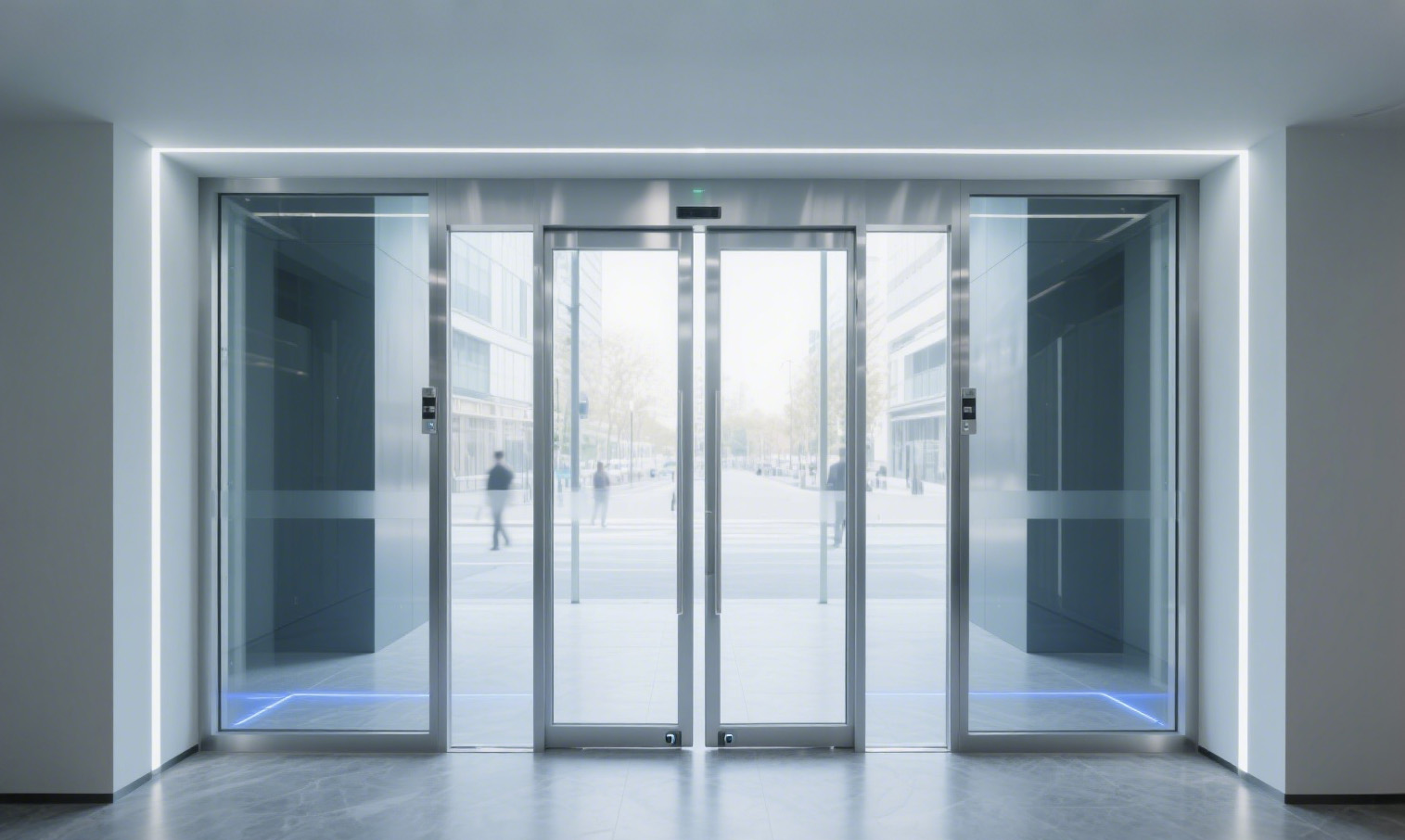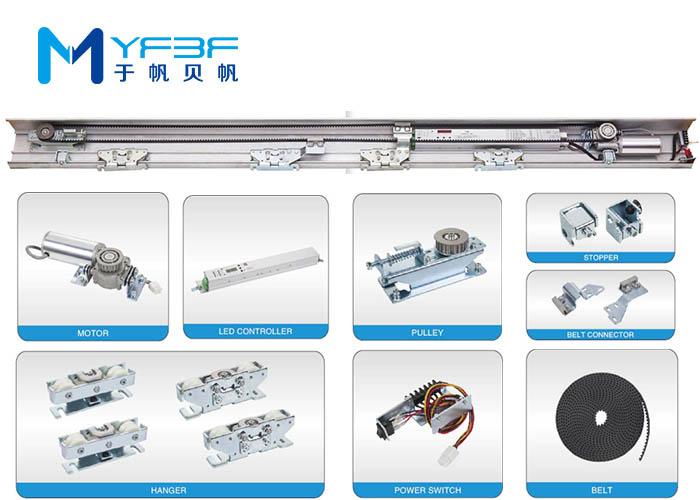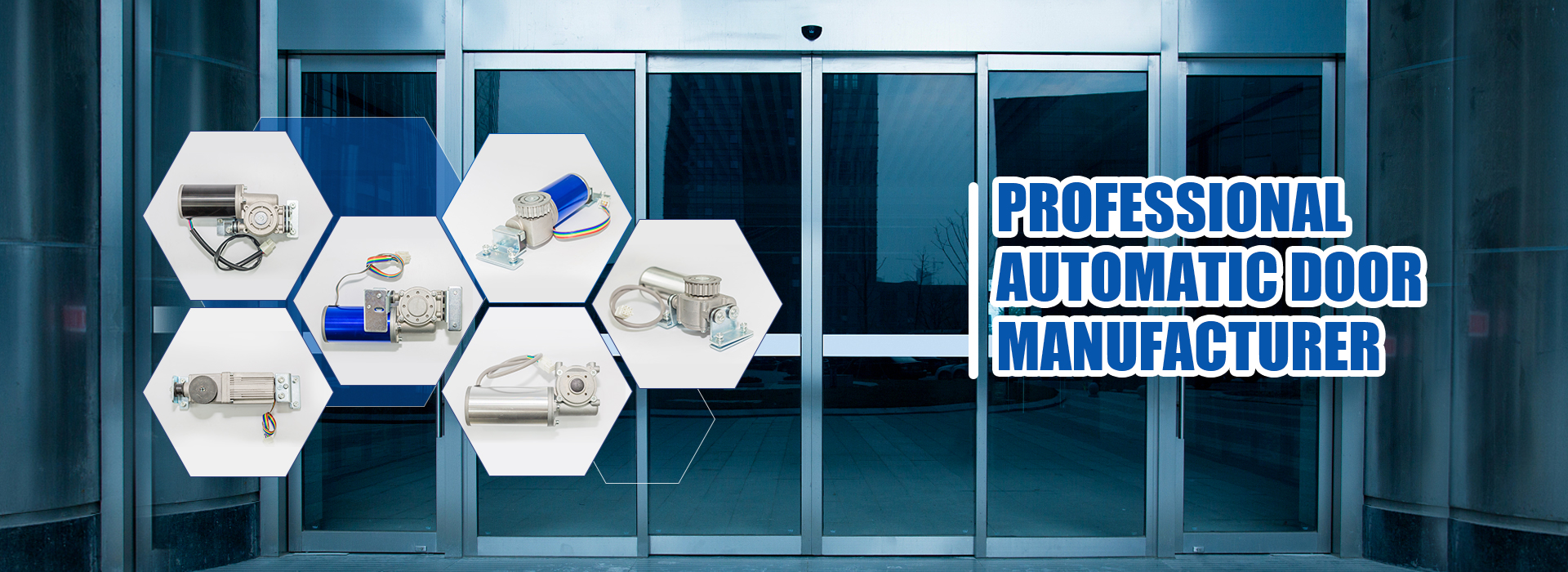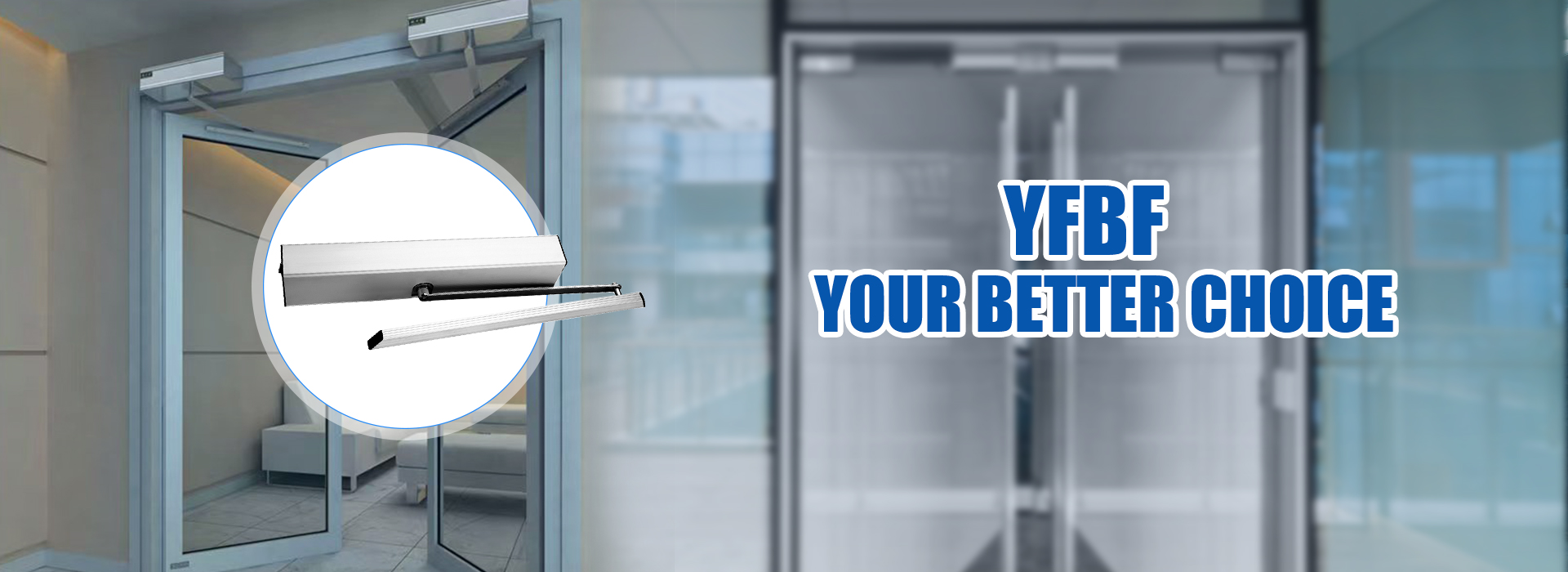
Automatic sliding glass door openers create easy access for everyone. These systems allow people with disabilities, seniors, and children to enter without touching the door. At least 60% of public entrances in new buildings must meet accessibility standards, making these doors an important feature in modern facilities.
Key Takeaways
- Automatic sliding glass door openers provide hands-free, touchless entry that helps people with disabilities, seniors, and parents move safely and easily.
- These doors create wide, clear openings with adjustable speeds and hold-open times, giving users more independence and comfort.
- Safety sensors detect obstacles to prevent accidents, and professional installation plus regular maintenance keep doors reliable and compliant with accessibility laws.
How Automatic Sliding Glass Door Opener Enhances Accessibility

Hands-Free and Touchless Operation
Automatic Sliding Glass Door Openers allow people to enter and exit buildings without touching any surfaces. This hands-free operation helps everyone, especially people with disabilities, seniors, and parents with strollers. They do not need to push or pull heavy doors. The doors open automatically when someone approaches, making entry easy and safe.
- Many hands-free systems use sensors to detect movement or presence.
- These systems help people who use wheelchairs or mobility aids by removing the need for physical contact.
- Touchless operation also reduces the spread of germs because people do not touch door handles or push bars. This is important in places like hospitals, schools, and shopping malls, where many people pass through each day.
- Studies show that hands-free technology makes tasks easier and less tiring for people with limited mobility.
Tip: Touchless doors help keep public spaces cleaner and safer by lowering the risk of spreading viruses and bacteria.
Wide, Unobstructed Entryways
Automatic Sliding Glass Door Openers create wide and clear entryways. These doors slide open along a track, saving space and removing obstacles. Wide openings make it easy for people using wheelchairs, walkers, or strollers to pass through without trouble.
| Requirement Aspect | Standard/Measurement | Notes |
|---|---|---|
| Minimum clear opening width | At least 32 inches | Applies to automatic doors in both power-on and power-off modes, measured with all door leaves open |
| Break-out feature clear width | Minimum 32 inches | For emergency mode operation of full power automatic sliding doors |
| Applicable standards | ADA, ICC A117.1, ANSI/BHMA A156.10 and A156.19 | Automatic sliding glass door openers comply with or exceed these standards |
- Wide entryways provide enough space for wheelchairs and strollers.
- Low-profile or threshold-free designs remove tripping hazards.
- Motorized operation means users do not need help to open the door.
Automatic Sliding Glass Door Openers hold the door open for a set time, so users can move at their own pace. This feature gives people more independence and confidence when entering or leaving a building.
Adjustable Speeds and Open Times
Many Automatic Sliding Glass Door Openers offer adjustable settings for opening and closing speeds, as well as how long the door stays open. These features help meet the needs of different users. For example, elderly people or those with mobility challenges may need more time to pass through the doorway.
- Door openers can be set to open and close at different speeds.
- Hold-open times can be adjusted from a few seconds up to longer periods.
- These settings make it easier for everyone to enter and exit safely.
Customizable speeds and open times help prevent the door from closing too quickly, which can be stressful or dangerous for some users. This flexibility supports a more inclusive environment.
Safety Sensors and Obstacle Detection
Safety is a key feature of every Automatic Sliding Glass Door Opener. These systems use advanced sensors to detect people or objects in the doorway. Common sensors include infrared, microwave, and photoelectric types. When the sensors detect someone or something in the path, the door stops or reverses to prevent accidents.
- Motion detectors trigger the door to open when someone approaches.
- Safety beams and presence sensors prevent the door from closing on people or objects.
- Emergency stop buttons allow users to halt the door if needed.
Obstacle detection systems work together to reduce the risk of injuries. Regular maintenance, such as cleaning sensors and checking their function, keeps these safety features working well. Some systems even use artificial intelligence to improve detection accuracy, making entrances safer for everyone.
Meeting Accessibility Standards and User Needs
Compliance with ADA and Other Accessibility Regulations
Automatic sliding glass door openers help buildings meet important accessibility laws. The Americans with Disabilities Act (ADA) and standards like ICC A117.1 and ANSI/BHMA A156.10 set rules for door width, force, and speed. For example, doors must have a clear opening of at least 32 inches and require no more than 5 pounds of force to open. The 2010 ADA Standards for Accessible Design also require automatic doors to have safety sensors and adjustable speeds. Regular inspections by certified professionals help keep doors safe and compliant.
| Standard/Code | Requirement | Notes |
|---|---|---|
| ADA (2010) | 32-inch minimum clear width | Applies to public entrances |
| ICC A117.1 | Max 5 pounds opening force | Ensures easy operation |
| ANSI/BHMA A156.10 | Safety and performance | Covers automatic sliding doors |
Note: Meeting these standards helps facilities avoid legal penalties and ensures equal access for all users.
Benefits for People with Mobility Aids
People who use wheelchairs, walkers, or other mobility aids benefit greatly from automatic sliding glass door openers. These doors remove the need to push or pull heavy doors. Wide, smooth openings make it easy to enter and exit. Sensors and low-friction operation reduce physical strain and risk of accidents. Many users report that automatic doors feel safer and more convenient than manual doors.
Support for Parents, Delivery Personnel, and Diverse Users
Automatic sliding glass door openers also help parents with strollers, delivery workers, and anyone carrying heavy items. Hands-free entry means users do not need to struggle with doors while holding packages or pushing carts. This feature improves customer satisfaction and makes buildings more welcoming for everyone.
Integration with Accessible Routes and Modern Technology
Modern buildings often connect automatic sliding glass door openers with accessible routes and smart systems. These doors can work with access control, fire alarms, and building management systems. Features like remote control, touchless sensors, and real-time monitoring make entrances safer and easier to use. Architects and engineers design these systems to fit universal design principles, creating spaces that work for all people.
Installation and Maintenance for Ongoing Accessibility

Professional Installation for Optimal Performance
Professional installation ensures that an Automatic Sliding Glass Door Opener works safely and smoothly. Installers follow a series of steps to guarantee proper alignment and secure mounting.
- Remove the drive assembly by unscrewing the four allen screws to access the back plate.
- Mount the back plate at the top of the door frame head, making sure it is flush at the bottom and overhangs the frame by 1.5 inches on each side. Secure it with self-tapping screws.
- Reinstall the drive assembly, ensuring the controller side faces the hinge side.
- Install the frame jamb tubes to the header, then set the frame upright and anchor it to the wall.
- Mount the door track and hang the door panels, checking that rollers and anti-rise rollers align for smooth movement.
- Install sensors and switches, wiring them to the master control board.
- Adjust and test the door for smooth operation and correct sensor function.
Installers always check compliance with ANSI and local safety codes. This process helps prevent accidents and ensures accessibility for all users.
Regular Maintenance and Safety Checks
Routine maintenance keeps automatic doors safe and reliable. Staff should perform daily safety checks by activating the door and watching for smooth opening and closing. They should inspect for obstructions or debris, especially in busy areas. Regularly test sensors and clean tracks to prevent jamming. Lubricate moving parts with approved products. Schedule professional inspections at least twice a year. Technicians look for hidden issues and make repairs as needed. Quick action on any problems prevents safety hazards and keeps the entrance accessible.
Tip: Always use AAADM-certified technicians for inspections and repairs to ensure compliance and safety.
Upgrading Existing Entrances
Upgrading older entrances with automatic sliding glass door openers removes barriers for people with mobility challenges. Modern sensors improve detection and reduce false triggers. Advanced systems help save energy by optimizing door open times. Some upgrades add biometric access controls for better security. Noise reduction features and IoT platforms make doors quieter and easier to maintain. Retrofitting often uses discreet solutions that preserve a building’s original look. These upgrades help older buildings meet accessibility laws and create safer, more welcoming spaces for everyone.
Automatic Sliding Glass Door Openers help buildings meet ADA standards and make entrances safer for everyone. These systems offer touchless entry, save space, and support energy efficiency.
- Owners who consult accessibility experts gain better compliance, improved security, and long-term savings.
FAQ
How do automatic sliding glass door openers improve accessibility?
Automatic sliding glass door openers allow users to enter buildings without touching the door. These systems help people with mobility aids, parents, and delivery workers move easily and safely.
What safety features do these doors include?
Most automatic sliding glass door openers use sensors to detect people or objects. The doors stop or reverse if something blocks the path, which helps prevent accidents.
Can existing doors be upgraded with automatic openers?
Yes, many existing entrances can be upgraded. Professional installers can add automatic openers and sensors to most sliding glass doors, making them more accessible and user-friendly.
Post time: Jul-14-2025



